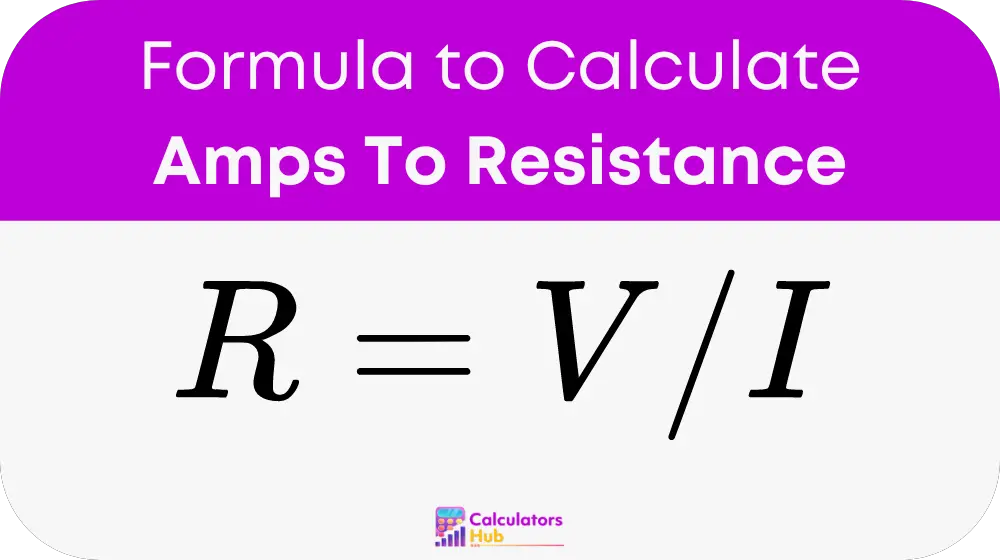An amps to resistance calculator is a vital tool in electrical engineering and physics, providing quick and accurate conversions that help professionals and students alike understand and manage electrical systems efficiently. This tool simplifies the calculation of resistance in an electrical circuit given the current in amperes and the voltage in volts. Understanding how much resistance is present in a circuit is crucial for designing safe and effective electrical systems.
Formula of Amps To Resistance Calculator
To calculate resistance (R) using current (I) in amperes and voltage (V) in volts, the formula is straightforward:

Where:
- R is the resistance in ohms (Ω)
- V is the voltage in volts (V)
- I is the current in amperes (A)
This formula is foundational in the study of Ohm's Law, which is essential for understanding how voltage, current, and resistance interact in an electrical circuit.
Table of Typical Values
Below is a table of typical values for common household appliances to help you estimate resistance without detailed calculations:
| Appliance | Voltage (V) | Current (A) | Estimated Resistance (Ω) |
|---|---|---|---|
| LED Bulb | 12 | 0.1 | 120 |
| Electric Iron | 120 | 10 | 12 |
| Toaster | 120 | 5 | 24 |
| Microwave Oven | 240 | 5 | 48 |
This table offers a practical reference for understanding typical resistance values in everyday electrical devices.
Example of Amps To Resistance Calculator
Consider a scenario where you need to calculate the resistance of a heating element that operates at 240 volts and draws 10 amperes of current. Using the formula provided:
R = 240 V / 10 A = 24 Ω
This example demonstrates how to apply the formula to find the resistance in a real-world application, which is crucial for ensuring the safe and efficient operation of electrical appliances.
Most Common FAQs
Resistance is a measure of the opposition to the flow of electric current in a conductor. It is crucial for designing electrical circuits and ensuring they operate safely under the desired conditions.
Yes, the amps to resistance calculator can be used for any set of voltage and current values, as long as they are within the operational limits of the circuit components.
The calculator is highly accurate given correct input values. However, the actual resistance can vary slightly due to factors like temperature and conductor material.